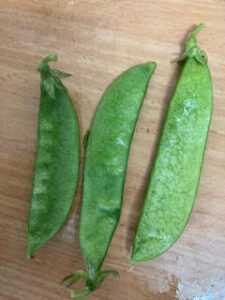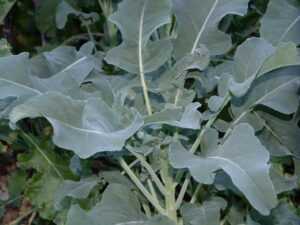Slow, Slow, Fresh Fount
Slow, slow, fresh fount, keep time with my salt tears; Yet slower, yet, O faintly, gentle springs: List to the heavy part the music bears, Woe weeps out her division, when she sings. Droop, herbs and flowers, Fall grief in showers; Our beauties are not ours: O, I could still, Like melting snow upon some craggy hill, Drop, drop, drop, drop, Since nature’s pride is, now, a withered daffodil.
Ben Jonson
These past few weeks have been freeeeeeezing! During the day we are mummified in warm clothes, rubbing our hands together again and again, jumping up and down to warm our toes… Even on sunny days, it’s hard to defrost, and most of the time any warmth is temporary for just a couple of hours in the afternoon, after which the frigid air descends upon us with a vengeance. The vegetables in the field are also feeling the cold weather and acting as if they’ve been placed into a refrigerator. (Actually, the temperatures are pretty close to a refrigerator’s. Sometimes walking into our great big fridge feels like we’re just outdoors.)
So what does lettuce do in the cold weather? Just like the bears, she withdraws into herself, cutting back on energy, and sinks into a deep, hibernating sleep… The vegetables are growing so s-l-o-w-l-y that it seems as if nearly nothing has changed from week to week. Though the carrot and beet both store their sugar in the bulbs of their roots and we get to enjoy their wintery sweetness, they do take their time thickening up and getting ready to be harvested. It’s like everything is happening in slow motion, as if someone is slowing down the speed of the projector. We work hard in the field, but upon our return the next day, it seems like nothing has really changed.
We’re familiar with this time of year and always attempt to prepare for it ahead of time, which is why over the warmer months of autumn we were very busy seeding and planting, getting things ready before the cold weather sets in. But now, from December to February, we halt the planting. This, after realizing that the vegetables planted and seeded in the very cold weather do not really come along, and that there is nothing to be gained by plunging new plants or seeds into the cold soil (even when it’s in the 10-degree vicinity). If we plant them now or at the end of the month, it’ll still be the same. So we wait and try to remember that the days are growing longer (very slowly….. you get the idea by now…) and soon there will be more hours of light and perhaps even warmer afternoons. In the meantime, the cold makes it easier with the weeding chores, as even weeds grow a little slower. We try to move around a lot, preferably at a swift pace, just to warm up a tad.
Unsurprisingly, the plants most influenced by the cold weather are those who prefer warmth. Our cucumbers and tomatoes, for instance, are relatively protected under plastic-covered growth houses where they are isolated to an extent from the harsh cold. Last week, we had one night of frost – the result of very cold air. Cold air is denser than warm air, which is why it drops and then settles on the plants, specifically those closest to the ground. When it is bitter cold, the moisture freezes on the plants, especially in the arteries of the leaves, and because frozen water expands, it bursts open the plant arteries and damages them.
There are three main types of frost:
Radiation frost is the most common frost that occurs on clear (cloudless), dry (low humidity) and quiet (windless) nights. In these cases, the air temperature near the surface and below is nearly at zero, and the local temperature drops. This type of frost is dangerous in valleys and plains such as ours.
A second type is the Advective Frost which occurs at low temperatures, created by cold air that blows into the region along with rain/hail, or right afterwards from somewhere else. With this type of frost, the higher areas are also affected by the cold air.
The worst of the three is Combined frost: a continuous and extreme event that combines radiative and advective frost. This type is characterized by very low daytime and nighttime temperatures and low humidity. It lasts longer, thus inflicting more severe damage on agricultural growths.
When the forecast called for frost one night last week, we added a shade net over the tomato and cucumbers’ growth houses, providing an additional layer of isolation and preventing the warmer (or rather – less frozen) temperatures from escaping. We also opened the flap on the lower side of the premises to allow the extremely cold air that accumulates in the lowest part to flow outward.
Happily, the frost wasn’t too extreme, and the cucumbers and tomatoes had a peaceful night. Under the growth house, we covered the greens in cloth to protect them from the frost, and they too were fine. We don’t worry about the strong winter crops – cauliflower, cabbage and broccoli, kohlrabi and fennel, or the roots that grow under protective soil. The only one who suffered some damage is the snow pea, which grows high in the open field, and is thus impossible to swathe in cloth. The frost created a whitish net on some of the pods:
Though it doesn’t completely ruin the poor peas, we definitely recommend eating them quickly and not keeping them shivering in the refrigerator.
The cold weather affects the cucumbers and tomatoes, significantly slowing down their development. They are simply standing still. Thus, we had fewer cucumbers to add to your boxes this week. We attempted to buy cucumbers from other organic growers, but unsurprisingly, we’re all suffering the same shortage (even in the Arava). Instead, we were able to purchase yummy sweet red peppers which replace the cucumbers this week. We now await a major growth spurt in our green pals.
This week, your boxes will also include broccoli greens. Usually we only harvest the broccoli, leaving the greens in the field. But, like all other vegetables, the “regular” leaves grow slowly and rest a lot. When the sun comes out, they open one eye and try to shake off their slumber, but at this stage it resembles my attempts to wake up my daughters in the morning (“I heard you and i’m getting up, it only looks like i’m still under the covers”). In my experience, it takes a lot more rays of sun and convincing and reminders and scolding for the leaves to break into a growth dance. In all fairness, we have been getting in their way a lot by cutting away at them to place greens in your boxes… In the interim, the broccoli leaves, planted in the autumn and growing on the strong bushes, were able to grow undisturbed and act as solar thermal collectors that yielded excellent broccoli inflorescence. Now, after the broccoli has been harvested, we decided to pick fresh bundles of its greens.
The broccoli greens in your boxes are mature leaves. Use them as you would Swiss chard or kale, but note that they are thicker and hence should be cooked longer. (They are most similar to kale in flavor and use). Their nutrition value is very high, rich in vitamins A, B-complex, C, and minerals (iron and calcium).
May we have a warm week, and may we see snow in Jerusalem, a song in our heart and a warm beverage (or two) in hand.
Wishing you a great wintery week,
From all of us at Chubeza
_____________________________
WHAT’S IN THIS WEEK’S COLLLLLLLD BOXES?
A reminder: The frigid cold has a profound effect on the cucumbers and tomatoes. It significantly slows down their growth…they simply don’t budge. So this week there were not enough cucumbers to put in your boxes. We attempted to buy cucumbers from other organic growers, but unsurprisingly, with every single one, even those in the Arava, nothing is moving. Instead, we succeeded in buying sweet, yummy red bell peppers, which will arrive in your boxes in place of the cucumbers. We await the accelerated growth of our bright green friends.
Monday: Potatoes, celery/celeriac/parsley root, cauliflower/cabbage, Swiss chard/spinach/tatsoi/ broccoli greens, kohlrabi/beets/ fennel/ turnips, fresh onions/leeks, broccoli, red sweet peppers, tomatoes, carrots, lettuce.
Large box, in addition: Jerusalem artichoke/fresh fava beans/garden or snow peas, daikon/baby radishes, parsley/ciantro.
FRUIT BOXES: Apples (red/green/yellow), oranges/red grapefruit/lemons, clementinas, avocado, bananas.
Wednesday: Potatoes, celery/celeriac/parsley root, cauliflower/cabbage, Swiss chard/spinach/tatsoi/ broccoli greens, fresh onions/leeks, broccoli, red sweet peppers, tomatoes, carrots, lettuce, parsley/ciantro/arugula.
Large box, in addition: Jerusalem artichoke/fresh fava beans/garden or snow peas, daikon/baby radishes/beets, kohlrabi/fennel/turnips.
FRUIT BOXES: Apples (red/green/yellow), oranges/red grapefruit, clementinas, avocado, bananas, lemons.


